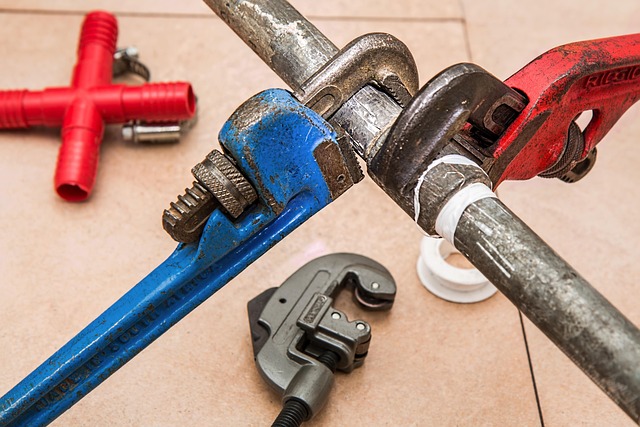Small pipe leaks can cause significant structural damage and financial strain over time. Early detection through regular checks for dampness, mold, unusual noises, or plumbing corrosion is crucial. Implementing pipe leak detection tips—such as inspecting pipes for corrosion, listening for unusual noises, checking water meters, and using smart leak detection systems—prevents health risks from mold growth, saves on costly water bills, and mitigates damage from major leaks. By staying proactive with these Pipe Leak Detection Tips, you can protect your property and ensure peace of mind.
Small pipe leaks often go unnoticed, but they can lead to significant water damage. This insidious problem quietly escalates, causing extensive harm to homes and businesses. Understanding the subtle signs and implementing early detection strategies is crucial for prevention. In this article, we’ll delve into the impact of small pipe leaks, explore why prompt action is essential, and provide effective pipe leak detection tips to help you stay ahead of potential water damage.
- Understanding the Impact of Small Pipe Leaks
- Early Detection: Prevention is Key
- Effective Pipe Leak Detection Tips
Understanding the Impact of Small Pipe Leaks

Small pipe leaks might seem insignificant, but they can lead to significant water damage over time. The impact is twofold: structural and financial. As water seeps through pipes, it can cause wood to rot, insulation to deteriorate, and walls or ceilings to become susceptible to mold growth. This not only compromises the integrity of your property but also poses health risks for residents. Moreover, leaks can result in substantial water bills due to persistent, undetected flow.
Early detection is key to mitigating these issues. Implementing pipe leak detection tips, such as regularly checking for subtle signs like dampness or mold, can help catch problems before they escalate. Homeowners should also be vigilant about unusual noises from pipes and periodically inspecting plumbing fixtures for any signs of corrosion or damage. Regular maintenance and prompt attention to potential leaks can save you from costly repairs and the inconvenience of major water damage.
Early Detection: Prevention is Key

Early detection of pipe leaks is a crucial aspect of prevention and can save you from significant water damage. Regularly checking for signs of leaks, especially in older homes or buildings, is an excellent Pipe Leak Detection Tip. Start by inspecting visible pipes for any signs of corrosion, cracks, or bulges. Check for wet spots or musty odours around pipes, walls, and ceilings, as these could indicate hidden leaks.
Implementing simple maintenance routines can help. This includes insulating pipes in colder areas to prevent freezing, fixing any loose connections, and installing water leak detection systems. By adopting proactive measures and staying vigilant, you can catch potential issues early, thereby minimising the risk of costly repairs and extensive water damage.
Effective Pipe Leak Detection Tips

Early detection is key when it comes to pipe leaks, as even small issues can escalate quickly and cause significant water damage. Here are some effective Pipe Leak Detection Tips:
1. Regular Checks: Schedule periodic inspections of your pipes, especially in areas prone to freezing or high pressure. Look for any signs of moisture, discoloration, or swelling on the walls and floors.
2. Listen for Strange Noises: Hissing, dripping, or clinking sounds coming from pipes can indicate a leak. Pay close attention during off-hours or overnight when normal household noises are minimal.
3. Check Water Meter: If you suspect a leak, turn off all water valves and check your water meter. A spinning meter even while no water is being used suggests an ongoing leak.
4. Use Technology: Modern technology offers smart leak detection systems that can alert you to problems before they become catastrophic. These devices monitor water usage patterns and detect unusual fluctuations.
5. Inspect for Corrosion: Look for rust or corrosion on pipes, fittings, and appliances. Even small signs of wear and tear can indicate underlying issues that may lead to leaks.
6. Keep an Eye on Water Bills: Sudden increases in your water bills with no apparent reason could be a red flag. Regularly compare your usage against previous months to spot any anomalies.
Small pipe leaks may seem insignificant, but they can lead to major water damage if left unchecked. Early detection is crucial for preventing extensive and costly repairs. By implementing effective pipe leak detection tips, such as regularly checking for subtle signs like water stains or dampness, you can catch these issues early and minimize potential harm to your property. Stay proactive with regular inspections and be mindful of unusual water usage to ensure the longevity of your plumbing system.
